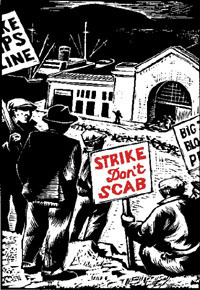|
|
|
|
|
|
Rosenberg museum celebrates Pullman porters
Rosenberg museum celebrates Pullman porters
http://www.houstonchronicle.com/news/houston-texas/houston/article/Rosen...
By Lenzi CauseyFebruary 14, 2016
Photo: Bob Levey, PhotographerThe Rosenberg Railroad Museum's exhibit, "The Life and Times of the Pullman Porter," opened Saturday and runs through April with the hope of reopening again in the future.
As Jessica Morgan led a tour of a new exhibit on Pullman porters at the Rosenberg Railroad Museum last week, trains occasionally rumbled past on tracks behind the building. At one point, the museum volunteer had to pause because the sound of the train horns was so loud.
The sound effects add to the experience of the museum and its new exhibit, "The Life and Times of the Pullman Porter," which opened Saturday after a year of planning.
Rosenberg is a fitting place for the exhibit because Pullman porters used to pass through the Fort Bend County community.
The opening, which coincides with Black History Month, focuses on a lesser-known aspect of the African American experience: The roles that the porters played in serving rail passengers for a century, as well as in establishing a black middle class in the U.S. and advancing the civil rights movement.
"There's a personal connection between the museum to the Pullman porters because they did come through (Rosenberg)," Morgan said. "On a personal level, it's a not very well-known aspect of American history, and the porters had a really big impact on history in general, like labor movements. They spearheaded nonviolent protests, and no one knows about them. They are a key part of our history that generally people don't know about."
MORE INFORMATION
Want to go?
The exhibit "Life and Times of the Pullman Porter" runs through April and is included with regular admission to the Rosenberg Railroad Museum, 1921 Avenue F in Rosenberg. The museum is located 35 miles southwest of downtown Houston via U.S. 69. Admission is $5 for adults and $3 for children, and free for kids 2 and younger. Museum hours are 10 a.m. to 5 p.m. Monday-Saturday and 1 p.m. to 5 p.m. Sunday. Information: www.rosenbergrrmuseum.org
From slavery to porter
The Pullman porters got their name from George Pullman, who owned and operated a train manufacturing business and invented the sleeping car for passenger train travel.
As he began hiring porters to serve on passenger trains after the Civil War, he turned to former slaves, believing they would know how to cater to passengers. While the porters worked subservient jobs, they had steady jobs with benefits and saved money for their families.
"By the early 1900s, George Pullman was the largest employer of black men in the country and he gave them the best jobs that a black man could have in those years because it was not backbreaking work and it paid relatively well and it let you see the country," Larry Tye, the author of "Rising from the Rails: The Pullman Porters and the Making of the Black Middle Class," told NPR in a 2010 interview.
"They supported their families back home, but most importantly they learned these critical lessons by riding on the trains. And watching the way their very wealthy white passengers behaved, they learned the importance of education," he added. "And in extraordinary doses, the Pullman porters saved the money they had and put their kids and grandkids through college and graduate school, which they saw as the road to ensure that their kids wouldn't end up working on the trains the way they did."
Among the descendants of Pullman porters were Thurgood Marshall, the first black to serve on the U.S. Supreme Court, former San Francisco Mayor Willie Brown and the late jazz great Oscar Peterson.
The Rosenberg exhibit, curated by Morgan, explores the history of Pullman porters and their influence in the industry through artifacts.
"(The Pullman porters) set the standard for first-class service, not just in the railroad industry, but in hospitality in general," Morgan said.
The porters established a workers' union in the 1920s, according to museum research. It was the first black labor union in the U.S., as well as the first to sign a collective bargaining agreement with a major corporation, the Pullman Company, after years of resistance.
Given their experience in organizing, the porters went on to have a significant influence during the civil rights movement.
Right up his alley
Morgan teamed with the museum staff, including executive director Ratha Liladrie, on the project.
"I have a degree in history and anthropology, so this is already an interest for me," said Morgan, a University of New Orleans graduate. "So when Ratha proposed the idea to do it, I didn't let her give it to anybody else."
Some of the artifacts in the exhibit come from the museum itself. Others were donated by or are on loan from members' private collections or other organizations.
The exhibit includes items from the personal collection of Rusty and Sandi Paulus and the Galveston Railroad Museum.
The exhibit lines two hallways of the museum. Except for a ladder that porters used, all of the materials are lined neatly in glass cases. All linens and china have the name "Pullman" etched in or on them. There are also a few pieces of silver used for dining table settings; tickets, pamphlets and matches from the cars; and advertisements from the era.
The exhibit, which was funded in part by donations from museum and community members and by a grant from Humanities Texas, is set to run through April, around the time of the museum's annual Railfest event.
Liladrie said the museum hopes to reopen it at a later date.
-

- Log in to post comments
- Printer-friendly version



